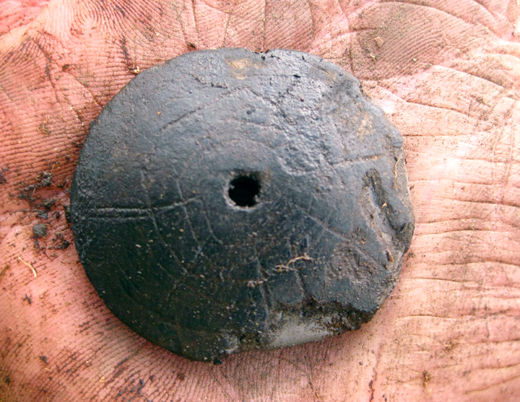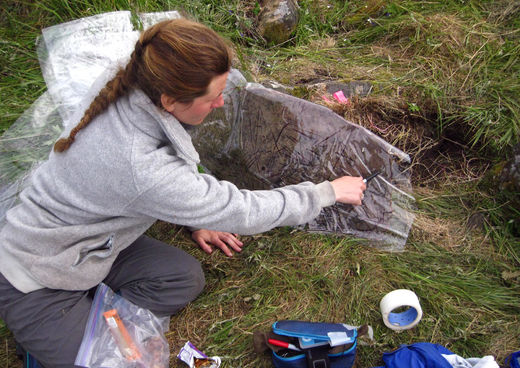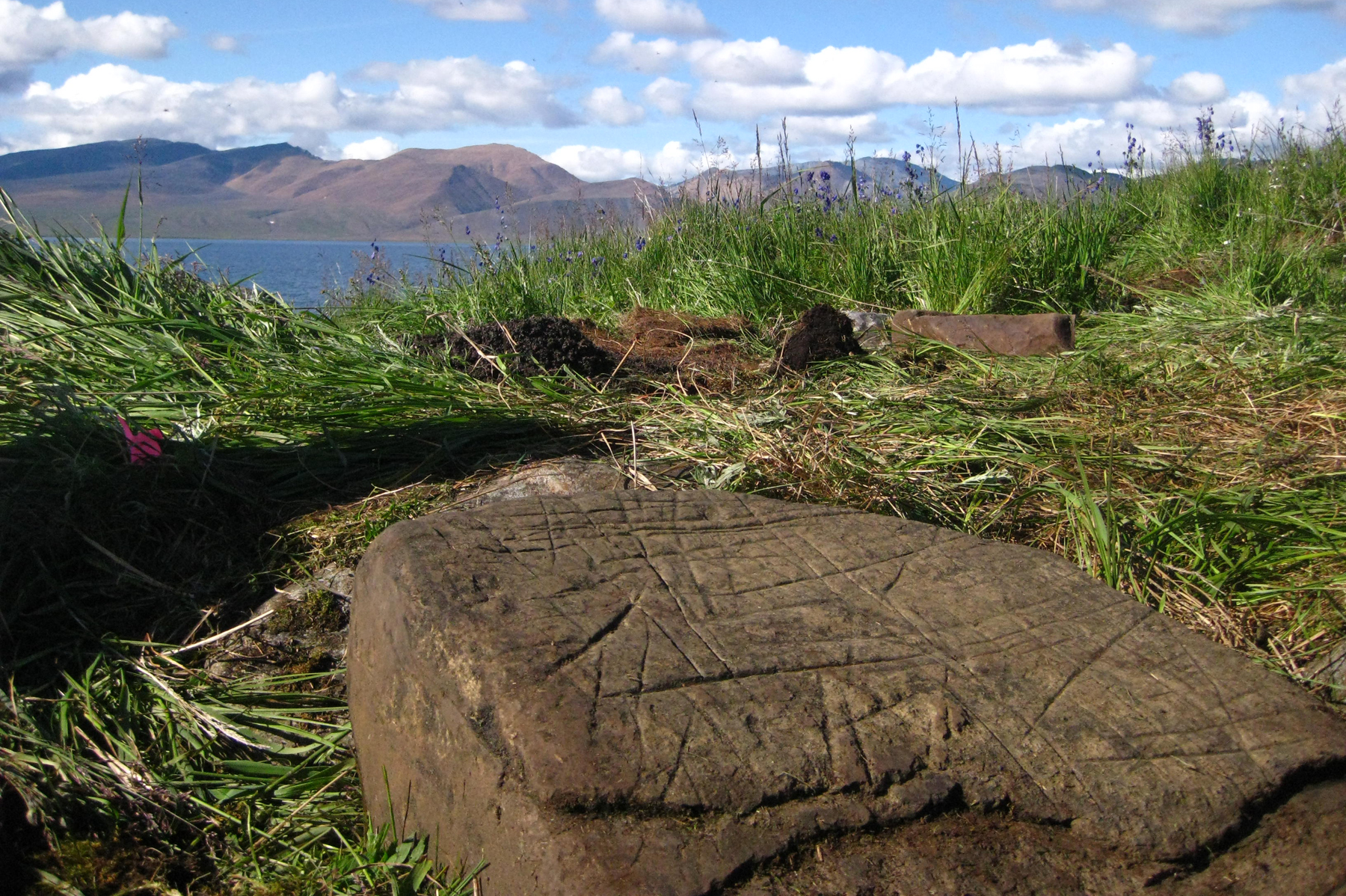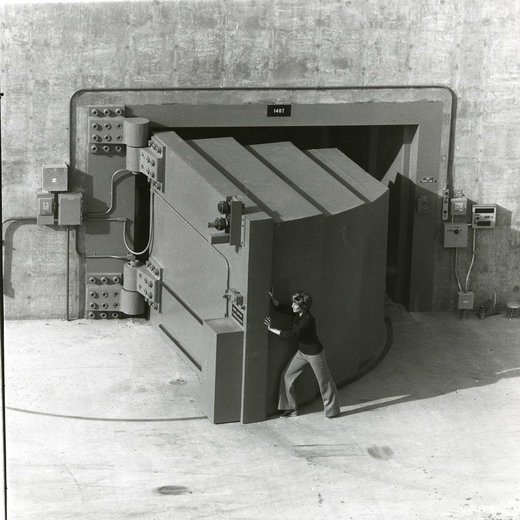
When he and members of his team began small-scale excavations at two of the sites, they made a new discovery: four decorated clay disks that appear to be the first of their kind found in Alaska.
"The first one looks like a little stone that had some scratch marks on it," said Shirar, a research archaeologist at the University of Alaska Museum of the North. "We got really excited when we found the second one with the drilled hole and the more complicated etchings on it. That's when we realized we had something unique."
After sharing information with colleagues and looking up examples in the archaeological record, Shirar said the disks appear to be a new artifact type for Alaska. "We only opened up a really small amount of ground at the site, so the fact that we found four of these artifacts indicates there are probably more and that something really significant is happening."

Mareca Guthrie, fine arts collection manager at the University of Alaska Museum of the North, joined the expedition to make sketches and take tracings of the boulders. At first, she was just excited for an opportunity to get out of the basement of the museum for a week, but she quickly developed an appreciation for the people who had lived there.
"It felt so intimate to be looking through someone else's things, knowing that they sat in the same spot and saw the same view of the mountains. When I started getting tired of the mixed nuts I brought for lunch, I thought, 'Did the kids complain when they ate caribou day after day or were they thankful to have it?'" she said. "I became so hungry to know more about them, I'm afraid I may have driven the archeologists a little crazy with my questions."
The crew visited the site to document the rock art, but also to excavate the subterranean house pits to find samples for radiocarbon dating, like animal bones or other organic matter that will give scientists a better idea of when people lived there. Given the house features and other information they've gathered, it looks like sometime in the late prehistoric era or the last thousand years.

"These objects and places clearly had special significance to their makers. These finds offer an especially tangible reminder of the rich spiritual and intellectual lives they led."



that the kids wouldn't have gotten tired of eating Caribou everyday (probably not what they actually did, of course), but that they would have gotten tired (or sick) from eating the mixed nuts everyday.